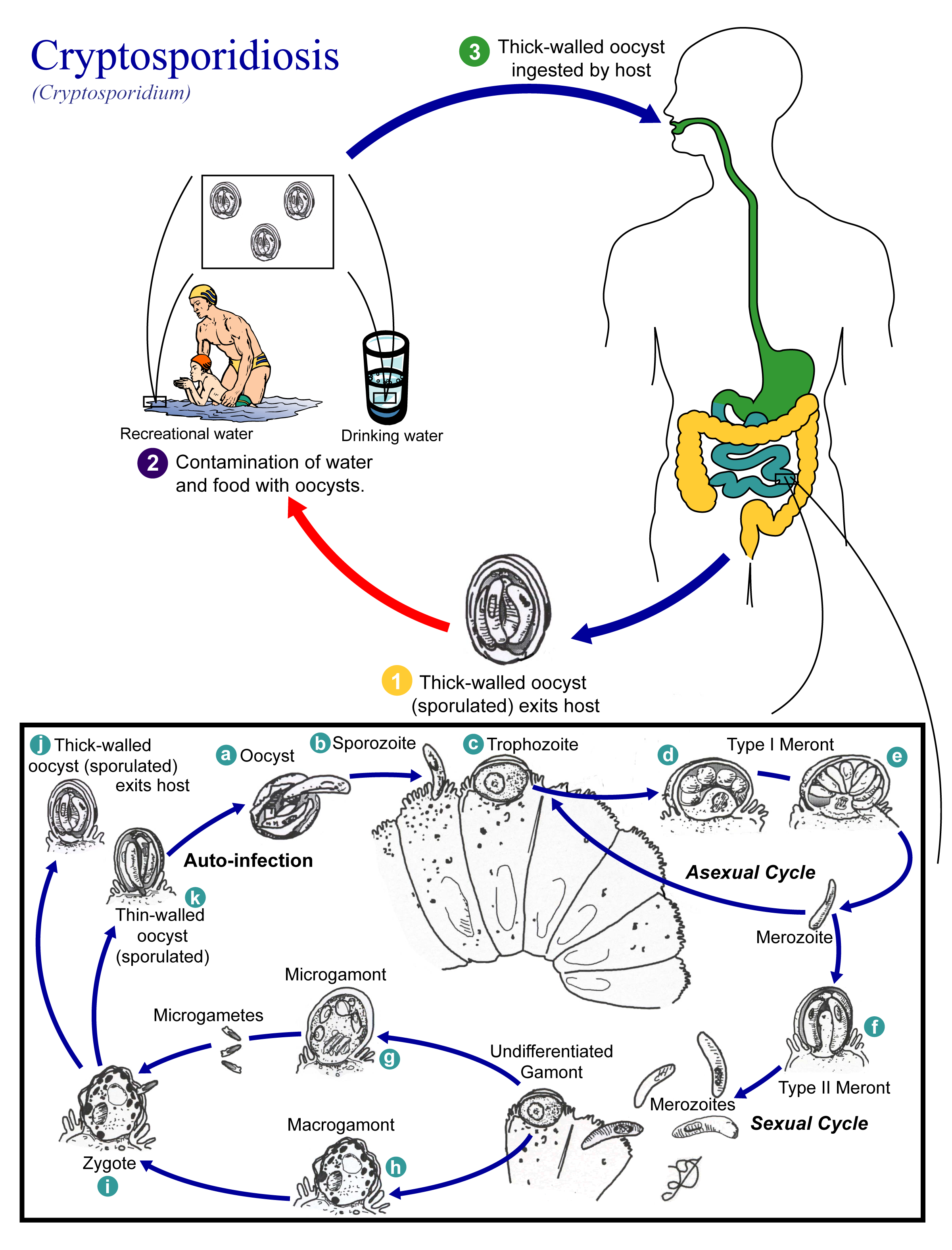Cryptosporidiosis pathophysiology
Editor-In-Chief: C. Michael Gibson, M.S., M.D. [1]
|
Cryptosporidiosis Microchapters |
|
Diagnosis |
|---|
|
Treatment |
|
Case Studies |
|
Cryptosporidiosis pathophysiology On the Web |
|
American Roentgen Ray Society Images of Cryptosporidiosis pathophysiology |
|
Risk calculators and risk factors for Cryptosporidiosis pathophysiology |
Overview
Pathophysiology
Infectious agents
A number of species of Cryptosporidium infect mammals. In humans the main causes of disease are C. parvum and C. hominis (previously C. parvum genotype 1). C. canis, C. felis, C. meleagridis, and C. muris can also cause disease in humans.
Life cycle

Crypto lives in the intestine of infected humans or animals. An infected person or animal sheds Cryptosporidium parasites in the stool. Millions of Crypto parasites can be released in a bowel movement from an infected human or animal. Shedding begins when the symptoms begin and can last for weeks after the symptoms (e.g., diarrhea) stop. You can become infected after accidentally swallowing the parasite. Crypto may be found in soil, food, water, or surfaces that have been contaminated with the feces from infected humans or animals. Crypto is not spread by contact with blood. Crypto can be spread:
- By putting something in your mouth or accidentally swallowing something that has come in contact with the stool of a person or animal infected with Crypto.
- By swallowing recreational water contaminated with Crypto. Recreational water can be contaminated with sewage or feces from humans or animals.
- By swallowing water or beverages contaminated by stool from infected humans or animals.
- By eating uncooked food contaminated with Crypto. All fruits and vegetables you plan to eat raw should be thoroughly washed with uncontaminated water.
- By touching your mouth with contaminated hands. Hands can become contaminated through a variety of activities, such as:
- Touching surfaces (e.g., toys, bathroom fixtures, changing tables, diaper pails) that have been contaminated by stool from an infected person,
- Changing diapers,
- Caring for an infected person, and
- Handling an infected cow or calf.